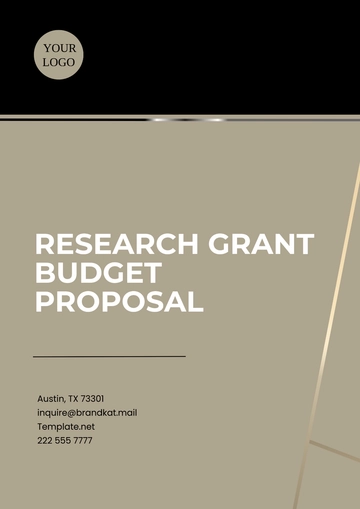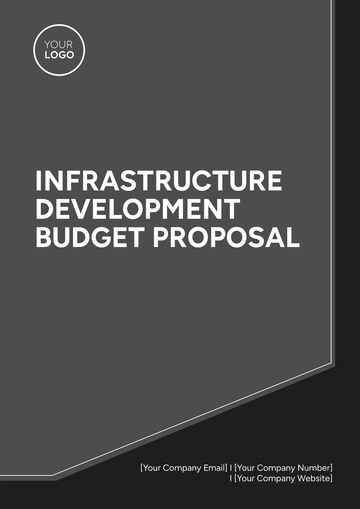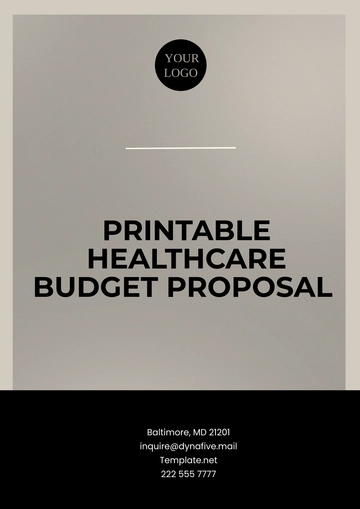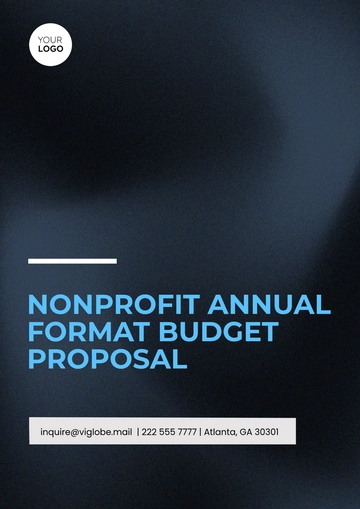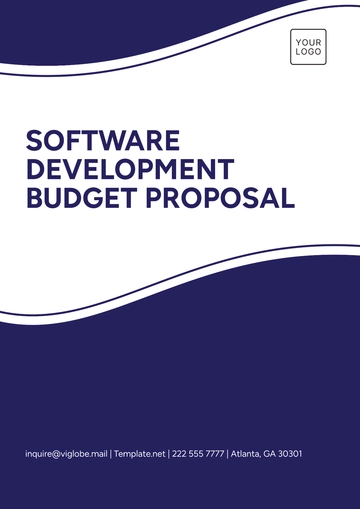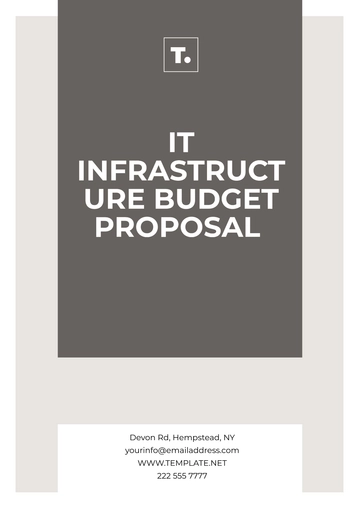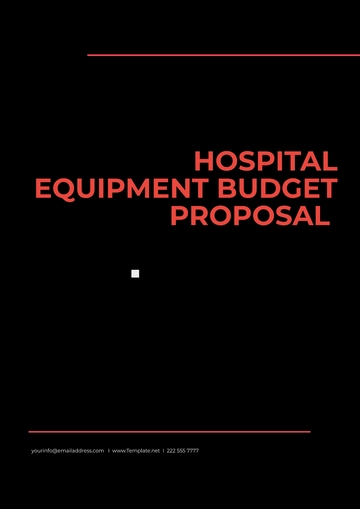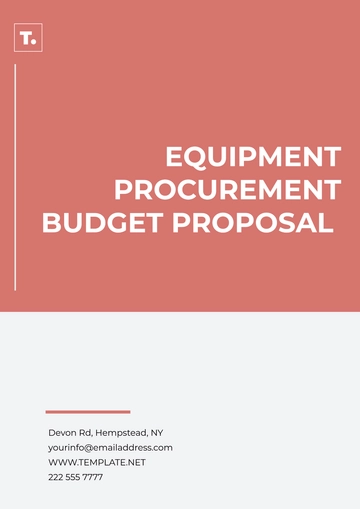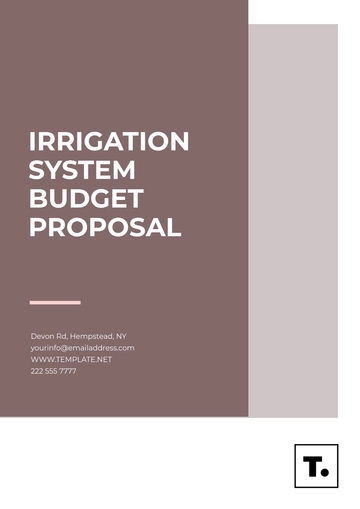Free Account Budget Adjustment Proposal
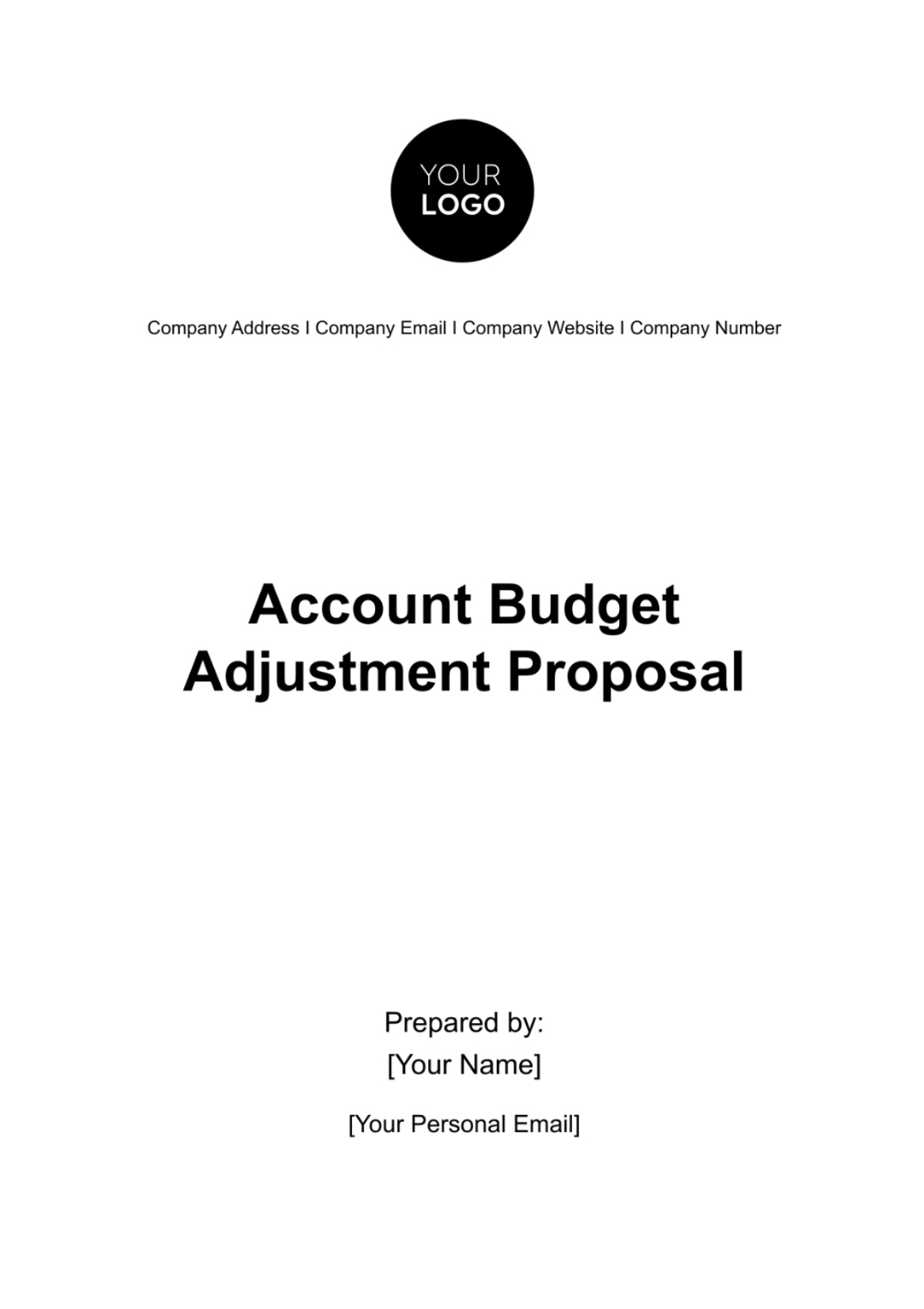
I. Executive Summary
This proposal delineates a comprehensive strategy to address inefficiencies in the current budget allocation, focusing on reducing costs and bolstering profitability. This proposal meticulously examines the existing budget structure through analytical methods and financial indicators, identifying areas where reallocation could optimize resource utilization. The scope encompasses all budget-related issues within the company, providing a holistic approach to enhancing financial efficiency. The budget plan, supported by justifications, offers a detailed breakdown of proposed changes, such as redirecting funds from marketing to digital channels and increasing investment in research and development. The proposal anticipates increased profitability, effective resource utilization, and the development of efficient financial habits, emphasizing the transformative potential awaiting board approval.
II. Objectives
The objectives of this proposal are the following:
Explain the Necessity for Budget Adjustment
Clearly articulate the reasons behind the proposed budget adjustments by conducting a detailed analysis of current inefficiencies, emphasizing the need for strategic reallocation to align financial resources with the company's goals.Present Ineffective Budget Allocation Areas
Identify and highlight specific areas of ineffective budget allocation through a meticulous examination of financial indicators and historical data, providing a transparent, data-driven assessment for stakeholders to understand shortcomings in the current strategy.Propose New Budget Allocation
Present a well-considered plan for a new budget allocation by leveraging insights gained from the analysis, reallocating funds to areas with higher ROI, and ensuring alignment with strategic priorities for both immediate efficiency improvements and long-term financial success.Discuss the Impact of Budget Adjustment
Thoroughly analyze and communicate the anticipated impact of the proposed adjustments, evaluating how the reallocation of resources will contribute to overall financial health, profitability, and operational efficiency, providing stakeholders with a clear understanding of the positive outcomes to expect.
III. Methodology
Before proposing strategic adjustments, the methodology involved a meticulous examination of the previous budget, employing the following methods:
A. Analysis of Previous Budget Allocation
Conducting a Comprehensive Review of Line Items and Expenses
This entailed an exhaustive examination to identify potential areas of overspending, inefficiencies, or opportunities for cost reduction within each line item and expense of the previous budget, ensuring a thorough understanding of financial intricacies.Evaluating the Performance of Existing Revenue Streams
Through an assessment that considered both historical data and projections, insights were gained into the contribution of existing revenue streams to the overall financial landscape, providing a foundation for strategic adjustments.
B. Quantitative and Qualitative Assessment
Holistically Evaluating through Quantitative Metrics
This involved combining quantitative metrics, such as financial ratios and benchmarks, to provide a comprehensive numerical analysis of the previous budget allocation, offering a quantitative foundation for subsequent strategic decisions.Integrating Qualitative Insights into the Analysis
By infusing the analysis with qualitative insights, a more nuanced understanding of the strengths and weaknesses of the previous budget allocation was achieved, enriching the decision-making process with contextual and qualitative considerations.
C. Identification of Ineffective Areas through Financial Indicators
Conducting an In-Depth Return on Investment (ROI) Analysis
The utilization of ROI metrics facilitated a thorough assessment of the effectiveness of budget allocation in different areas, pinpointing those with suboptimal returns and establishing a rationale for strategic adjustments.Determining and Analyzing Cost-Effectiveness Ratios
By calculating and analyzing cost-effectiveness ratios, identification of areas where expenses could be streamlined or reallocated more efficiently occurred, setting the stage for a refined and optimized budget allocation.
D. Synthesis
Integrating Findings for a Holistic Insightful Narrative
The synthesis phase involved amalgamating results from diverse analyses, creating a comprehensive narrative that provided a holistic insight into the strengths, weaknesses, and opportunities for improvement within the previous budget allocation.Strategically Preparing for the Adjustment Proposal
By synthesizing the accumulated data and insights, this not only laid the groundwork for the proposed strategic adjustments but also positioned the forthcoming proposal as a well-informed and strategic response to the identified shortcomings in the previous budget.
IV. Budget Plan and Justifications
The budget plan and justifications section delineates the proposed adjustments to the current budget, providing a strategic overview of reallocated funds and the reasoning behind each adjustment:
Area | Current Budget | Proposed Budget | Justification |
|---|---|---|---|
Marketing | $1,000,000 | $800,000 | Funds redirected to digital marketing for a higher ROI. |
In the proposed adjustments, the marketing budget sees a reduction from $1,000,000 to $800,000. The justification for this adjustment lies in redirecting funds towards digital marketing, a channel that has demonstrated a higher return on investment (ROI). By strategically reallocating resources to digital platforms, the company aims to enhance its marketing efficiency, reach a wider audience, and ultimately achieve a more impactful and cost-effective promotional strategy. This adjustment reflects a forward-looking approach, aligning the marketing budget with evolving industry trends and optimizing resource allocation for maximal impact.
This level of detail is crucial for stakeholders, including the board and employees, to comprehend the strategic thinking behind the proposed changes. Furthermore, it serves as a guide for effective financial decision-making, aligning budget adjustments with overarching organizational goals. This underscores the strategic nature of the proposed changes, positioning the company for financial efficiency and resilience in the dynamic business landscape. Overall, this is instrumental in conveying a well-founded and purposeful approach to budget adjustment, fostering confidence and support among decision-makers.
VI. Benefits
A. Increased Digital Presence
Enhanced Online Visibility
By reallocating funds to digital marketing, the company aims to increase its online visibility through targeted campaigns, social media strategies, and search engine optimization. This heightened digital presence is expected to expand the company's reach and engagement with the target audience.Improved Customer Interaction
Increased investment in digital marketing enables more interactive and personalized customer engagement. This includes leveraging social media platforms for direct communication, responding to customer inquiries promptly, and fostering a sense of community around the brand.
B. Higher Return on Investment (ROI)
Efficient Allocation of Resources
Redirecting marketing funds to digital channels, which have demonstrated a higher ROI, ensures a more efficient allocation of resources. This strategic shift is designed to maximize the impact of marketing expenditures, resulting in a better return on the overall marketing investment.Measurable and Data-Driven Results
Digital marketing platforms provide robust analytics and data tracking capabilities. This enables the marketing team to measure the effectiveness of campaigns, analyze user behavior, and make data-driven decisions for continuous improvement.
C. Innovation in Marketing Strategies
Investment in Emerging Technologies
Increased budget allocation for marketing allows the exploration of emerging technologies such as augmented reality, virtual reality, or interactive content. This innovation can set the company apart in the market, offering unique and engaging experiences to customers.Adaptation to Changing Consumer Trends
By investing in research and development within the marketing domain, the company can stay ahead of changing consumer trends. This adaptability is crucial for maintaining relevance and resonance with the target audience.
D. Strengthened Brand Image
Consistent Brand Messaging
Effective marketing strategies, supported by strategic budget allocation, facilitate consistent and compelling brand messaging. This consistency across various digital platforms strengthens the overall brand image and fosters brand loyalty among customers.Differentiation and Positioning
Allocating resources to innovative marketing initiatives allows the company to differentiate itself in the market. This differentiation contributes to a unique brand positioning that resonates with the company's target demographic.
VII. Risks and Mitigation Strategies
A. Risks
Operational Disruptions
The intricate process of budget reallocation may pose a risk of operational disruptions, potentially causing delays in ongoing projects, resource misalignment, and a temporary dip in overall productivity. Proactive measures, such as a phased implementation approach with well-defined transition periods, can mitigate these risks by allowing the organization to adapt gradually without significant operational shocks.Employee Resistance
Anticipated resistance from employees towards the changes in budget allocation necessitates a comprehensive change management strategy. By fostering open communication channels, providing clarity on the benefits of the adjustments, and actively involving employees in decision-making, the organization can alleviate concerns, build understanding, and foster a sense of ownership in the transformative process.Market Fluctuations
Unpredictable market fluctuations can impact the anticipated return on investment from adjusted marketing strategies. A robust risk mitigation strategy involves continuous market monitoring, enabling the organization to promptly adapt its marketing approaches based on real-time market trends, ensuring resilience in the face of dynamic economic conditions.Technology Implementation Challenges
The introduction of new technologies for marketing may encounter implementation challenges, such as compatibility issues, learning curves, or unforeseen technical glitches. Mitigation involves a careful pilot testing phase, allowing for the identification and resolution of implementation challenges before full-scale deployment, ensuring a seamless integration of innovative technologies.Inadequate Employee Training
The risk of inadequate employee training leading to difficulties in adapting to new budgetary processes can be addressed through thorough training programs. Investing in comprehensive training not only ensures that employees acquire the necessary skills but also promotes a smooth transition, reducing the likelihood of disruptions caused by a lack of understanding or familiarity.Financial Instabilities
Shifts in budget allocation may pose a temporary risk to financial stability. Developing robust financial contingency plans, including stress testing and scenario planning, provides a safety net during the adjustment phase, helping the organization navigate potential financial challenges and maintain stability throughout the transition.Competitive Response
The risk of competitors responding aggressively to the strategic adjustments necessitates proactive measures. Conducting thorough competitor analysis and scenario planning enables the organization to anticipate potential responses, allowing for strategic counteractions and maintaining market share and positioning amidst competitive pressures.Communication Breakdown
Ineffective communication leading to misunderstandings among stakeholders can create confusion and resistance. Establishing transparent communication channels, regular stakeholder updates, and the proactive sharing of information help prevent breakdowns, fostering a collaborative and informed environment throughout the adjustment process.
B. Mitigations
Phased Implementation Approach
A carefully structured phased implementation approach, incorporating pilot phases and gradual transitions, ensures that operational disruptions are minimized. This approach allows for continuous monitoring and adjustments, reducing the risk of sudden shocks to ongoing projects and maintaining a steady operational rhythm.Comprehensive Change Management
Implementing a comprehensive change management strategy involves not only communicating the 'why' and 'how' behind the adjustments but actively involving employees in decision-making. By fostering a sense of ownership, addressing concerns proactively, and providing ongoing support, the organization can mitigate resistance, creating a more receptive environment for the proposed changes.Continuous Market Monitoring
Continuous market monitoring provides the organization with real-time insights into market dynamics, enabling timely adjustments to marketing strategies in response to fluctuations. This proactive approach ensures that the organization remains agile and adaptable, maximizing the effectiveness of marketing initiatives in a dynamic market environment.Pilot Testing for Technologies
A pilot testing phase for new technologies allows the organization to identify and resolve implementation challenges before full-scale deployment. This careful testing ensures a smoother integration of innovative technologies, minimizing disruptions and optimizing the benefits of technological advancements in the marketing domain.Thorough Training Programs
Thorough training programs go beyond basic skill acquisition, incorporating elements that foster a deep understanding of the new budgetary processes. This approach ensures that employees not only possess the necessary skills but also comprehend the rationale behind the changes, facilitating a smoother adaptation and reducing the risk of resistance due to lack of understanding.Financial Contingency Planning
Robust financial contingency planning involves stress testing and scenario planning to identify potential financial instabilities. By proactively addressing these risks and having contingency measures in place, the organization can navigate uncertain financial terrain with resilience, minimizing the impact of shifts in budget allocation on overall financial stability.Competitor Analysis and Scenario Planning
Conducting competitor analysis and scenario planning allows the organization to anticipate potential responses from competitors. This proactive approach enables strategic counteractions, ensuring that the organization can navigate competitive challenges effectively and maintain its market share and positioning.Transparent Communication Channels
Establishing transparent communication channels involves not only regular updates but also an emphasis on clear, accessible, and two-way communication. Proactively addressing concerns, providing detailed explanations, and encouraging feedback contribute to a transparent communication environment, reducing the risk of misunderstandings and fostering a collaborative and informed atmosphere throughout the adjustment process.Employee Involvement in Decision-Making
Actively involving employees in decision-making fosters a sense of ownership and reduces resistance to changes. This approach empowers employees to contribute their insights, ensuring that their perspectives are considered in the decision-making process, leading to a more engaged and supportive workforce during the adjustment phase.Regular Stakeholder Updates
Providing regular updates to stakeholders ensures ongoing alignment and minimizes the risk of misunderstandings. Regular communication helps maintain transparency, addresses evolving concerns, and keeps stakeholders informed about the progress of the adjustment process, fostering a sense of collaboration and shared understanding.
VIII. Conclusion
In conclusion, the proposed budget adjustments embody a strategic initiative poised to reshape the company's financial landscape. Through a meticulous analysis of current budget allocations and identification of inefficiencies, the proposal offers a well-founded plan for reallocation, strategically positioning the company for sustained success. Emphasizing increased profitability, optimal resource utilization, and the cultivation of efficient financial practices, it signifies a potential catalyst for transformative growth. As the proposal awaits board approval, the anticipated benefits signal a journey towards enhanced financial resilience and heightened competitiveness, aligning with the company's strategic vision. The proposal encapsulates a forward-looking approach, emphasizing adaptability and strategic foresight to navigate the evolving financial terrain.
- 100% Customizable, free editor
- Access 1 Million+ Templates, photo’s & graphics
- Download or share as a template
- Click and replace photos, graphics, text, backgrounds
- Resize, crop, AI write & more
- Access advanced editor
Effective proposal creation and streamlined budget adjustments in a few clicks! Propose budget adjustments confidently with our editable Account Budget Adjustment Proposal Template on Template.net! This customizable proposal allows seamless customization using the AI Editor Tool. Edit it to your budget adjustment needs, ensuring alignment with your company's goals today!
You may also like
- Business Proposal
- Research Proposal
- Proposal Request
- Project Proposal
- Grant Proposal
- Photography Proposal
- Job Proposal
- Budget Proposal
- Marketing Proposal
- Branding Proposal
- Advertising Proposal
- Sales Proposal
- Startup Proposal
- Event Proposal
- Creative Proposal
- Restaurant Proposal
- Blank Proposal
- One Page Proposal
- Proposal Report
- IT Proposal
- Non Profit Proposal
- Training Proposal
- Construction Proposal
- School Proposal
- Cleaning Proposal
- Contract Proposal
- HR Proposal
- Travel Agency Proposal
- Small Business Proposal
- Investment Proposal
- Bid Proposal
- Retail Business Proposal
- Sponsorship Proposal
- Academic Proposal
- Partnership Proposal
- Work Proposal
- Agency Proposal
- University Proposal
- Accounting Proposal
- Real Estate Proposal
- Hotel Proposal
- Product Proposal
- Advertising Agency Proposal
- Development Proposal
- Loan Proposal
- Website Proposal
- Nursing Home Proposal
- Financial Proposal
- Salon Proposal
- Freelancer Proposal
- Funding Proposal
- Work from Home Proposal
- Company Proposal
- Consulting Proposal
- Educational Proposal
- Construction Bid Proposal
- Interior Design Proposal
- New Product Proposal
- Sports Proposal
- Corporate Proposal
- Food Proposal
- Property Proposal
- Maintenance Proposal
- Purchase Proposal
- Rental Proposal
- Recruitment Proposal
- Social Media Proposal
- Travel Proposal
- Trip Proposal
- Software Proposal
- Conference Proposal
- Graphic Design Proposal
- Law Firm Proposal
- Medical Proposal
- Music Proposal
- Pricing Proposal
- SEO Proposal
- Strategy Proposal
- Technical Proposal
- Coaching Proposal
- Ecommerce Proposal
- Fundraising Proposal
- Landscaping Proposal
- Charity Proposal
- Contractor Proposal
- Exhibition Proposal
- Art Proposal
- Mobile Proposal
- Equipment Proposal
- Student Proposal
- Engineering Proposal
- Business Proposal








